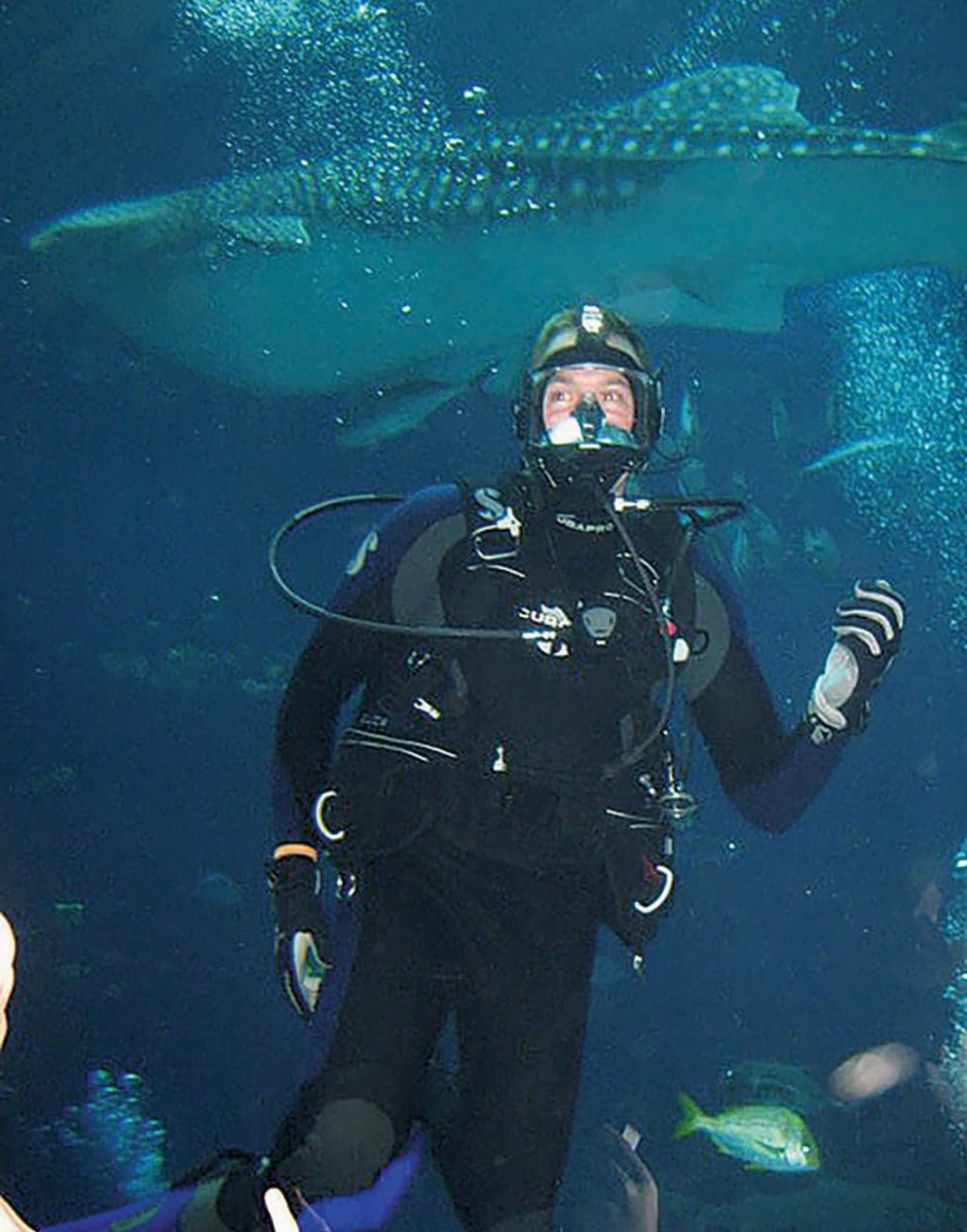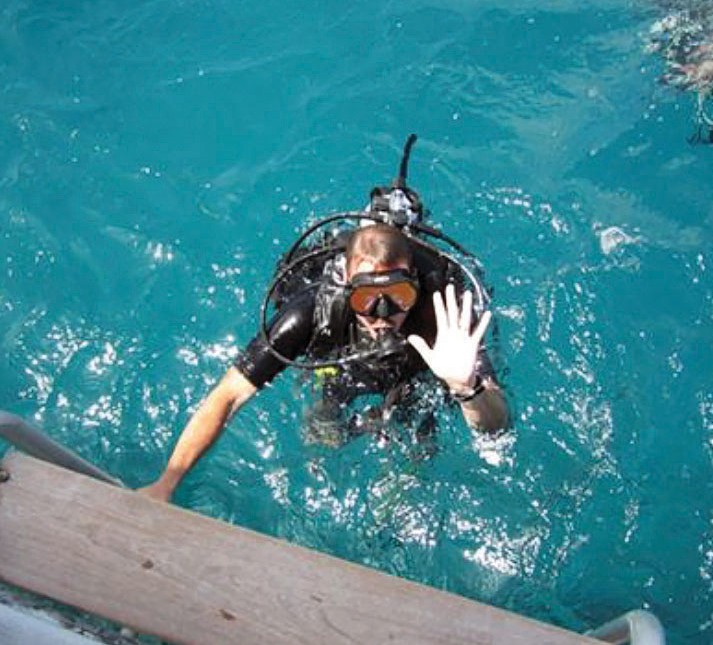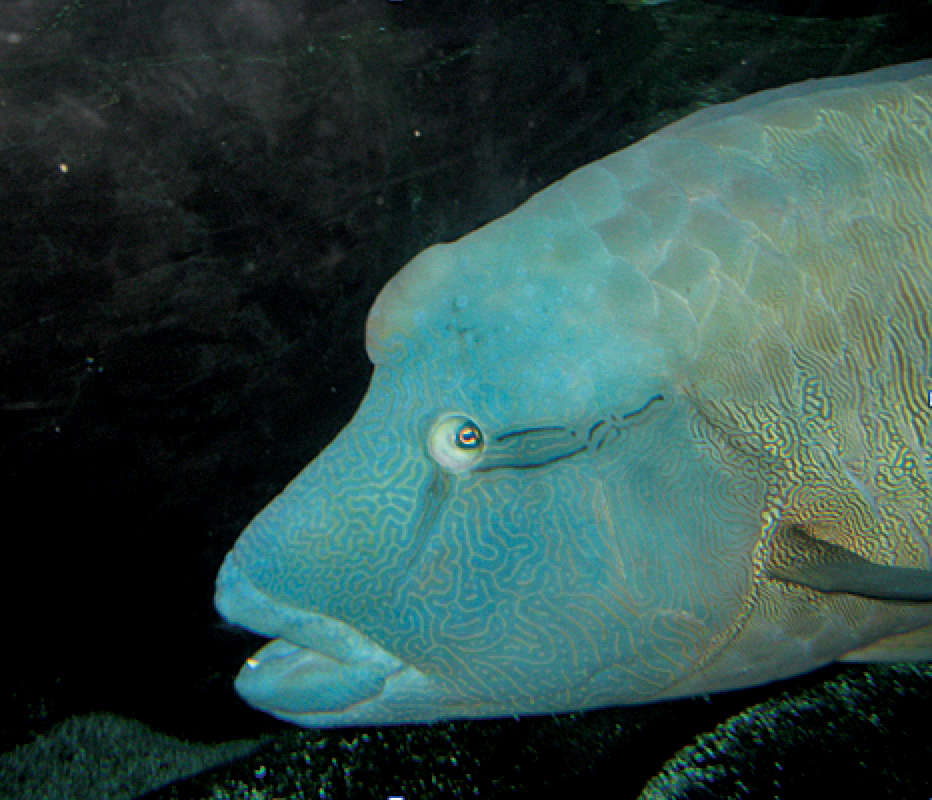You have free articles remaining this month.
Subscribe to the RP Witness for full access to new articles and the complete archives.
Anyone that has ever gone scuba diving remembers the moment they drew their first breath of air underwater. Many who try scuba abandon their quest when the reality of what they are doing strikes home. It is unnatural and unnerving if proper training hasn’t preceded the experience. However, with proper training and preparation, scuba diving is a freeing experience filled with awe, providing a glimpse of God’s majesty below the water’s surface.
The vast majority of us have seen only half of God’s earth. We have enjoyed the fresh air of a spring day, the beauty of green hills, the subtle folds of a flower, or the thrill of sledding down a snow-covered hill. Whatever “surface” activity you enjoy, until you slip below the waves, you haven’t seen and experienced the beauty of where Leviathans play. There are three million certified divers in the United States, yet the national population is nearly 326 million people. Less than 1% of the U.S. population has seen the magnificence of God’s creation under the water. It is something to behold.
I am not a marine biologist or an aquatic ecologist. I am an instructional technology specialist and a state-certified technology education teacher. However, I’m a lifelong learner, and I yearned to know more about the subject matter I taught. It was apparent to me that I was going to have to get in the water in order to expand my own personal experience and understanding. I began scuba in 2004, and I am now a certified diving instructor. I also obtained my Coast Guard commercial pilot’s license, which allows me to operate dive boats. Lord willing, operating those boats might be my next career.
I have been diving in four oceans, dozens of lakes, many mountain ponds, and the St. Lawrence Seaway. I have been wreck diving, and I’ve even tried cave and ice diving. However, I’m not likely to do that type of diving again because of the inherent risk and the technical equipment required.
Many divers won’t dive in the Great Lakes or the Finger Lakes of Central New York. This is considered extreme diving, and these locations aren’t for the fainthearted. The water is dark and cold. As you prepare to dive and enjoy the calm waves while aboard the dive boat, you become uncomfortably warm in your 7 mm wetsuit, neoprene gloves, boots, and hood. This warmth is all but forgotten as you enter the 76-degree water. Initially, the temperature change is welcomed and quite refreshing. However, the water temperature drops a full 10 degrees as you reach the first thermocline. The temperature will drop again as you descend deeper. A thermocline is when the warm water, which is heated by sunlight, ends and meets the deep water void of solar radiation. It is a thin dividing line that is seen with your eyes. The quick shiver that accompanies this rapid change is the second reminder that you’ve reached the deep.
During one of my first dives into the abyss, I remembered Isaiah 43🔢 “When you pass through the waters, I will be with you; and through the rivers, they shall not overwhelm you.” When underwater, I’m mindful of my surroundings and all of my senses are at full alert, but there is a quiet and a calm too. There is absolute silence except for one’s own breath and heartbeat. The algae and plankton are visible, and fish come to investigate.
As the light from above fades, so do the colors, until the bright beam of your flashlight illumines the beauty of a sandy bottom covered by plants streaked with vivid whites, yellows, and greens. The occasional rock hides the large red Canadian crayfish. Tree branches and boulders are evidence that some mighty storm loosed them from their former place. In these moments, absent from distraction, God’s wonderful creation comes alive; it drives me to want to know more.
This place below the surface reminds me of Christ’s work, seen visibly in baptism. Living water is associated with life, and life thrives here. The Spirit of God once hovered over a formless earth, and it is here, underneath the waves, that I am free of man’s daily routine. Cell phones, Facebook, emails, tweets, Snapchats, and hashtags don’t work down here. It is a place where I can rest.
I find beauty underwater when I take time to look at the intricacies of God’s creative hand. I’ve been amazed at the bravery of a large-mouth bass as it protects its den. The obstinance of a round goby is unparalleled. I’ve physically poked one of these little fish, and it wouldn’t swim away. The round goby is an invasive species that is wreaking havoc on fish populations within the lakes. It is capable of consuming 1,000 fish eggs in a minute. I’ve studied shark fossils embedded in rock walls some 120’ down in Canandaigua Lake, which is over 250 miles inland from the Atlantic Ocean. I’ve held mudpuppies in my hand that are the largest members of the salamander family and will reach 14” in length. They are quiet and unassuming creatures that have external gills. They are nocturnal, only coming out during the day if the water is murky. It takes careful searching and patience to find one, but it is an amazing creature.
I’ve left the dive boat with blue skies above and was underwater as a rainstorm swept across the lake and turned the water into mud. I came up to three-foot waves washing over me. In this moment, I couldn’t help but think of Jesus standing up, calling the waves to be silent, and His creation complying with His command.
Have I ever been diving with sharks? Yes! In fact, while diving in St. Thomas, a blacktip reef shark zoomed above me. Its shadow on the ocean floor first made me aware of its presence. Panic isn’t something I experience when interacting with sharks. Instead, I am filled with awe and wonder as I watch its glistening skin slice through the water at 25 mph. Psalm 104:26–31 reminds us that the Lord rejoices in His work, He provides for His creation, and that the Leviathans play in the water. These are magnificent creatures that testify to the beauty and intricacies of God’s creation. We enjoy five senses, but sharks have six. Sight, smell, taste, touch, and hearing are our senses, but the shark is also able to pick up electrical signals in the water.
Have I ever been scared while diving? Yes! While diving through an underwater tunnel, I was met by a four-foot barracuda. With not much space in a tunnel, and only one direction available, you stay the course and find that quick prayer, “God help,” is good for the soul. Yes, I joke, but that uninterrupted time focusing on the goodness of God is another blessing to the scuba diver. I often find myself praying or praising and glorifying God as I experience this handiwork that most have not enjoyed.
I’ve had two massive sea turtles settle into the coral next to me as I enjoyed the warm clear waters of Maui. The only thing more amazing than that was finding them waiting for me on the beach when I came out of the water. These turtles were sunning themselves in order to warm up, and I took the advantage to sunbathe with them.
The technology available today also makes it possible for me to broadcast into classrooms and conduct live underwater lessons while students sit in their classroom. One of my most memorable broadcasts was to Raai Kavik, Alaska. It is a small fishing community where wearing life jackets is not a part of the cultural norm. I was asked to share the realities of positive, negative, and neutral buoyancy with their children. A person overboard in cold water, with saturated clothes, cannot remain buoyant for more than 60 seconds. The likelihood of survival is slim if one enters the water unexpectedly in this way. I’ve also been pleased to teach “Diving into Geometry” with high school students and emphasize the need to understand and master geometric principles if you are to become a diver. Pressure, volume, area, points, lines, and angles are essential to underwater navigation.
The highlight of my diving career has been working with the Georgia Aquarium on two occasions to broadcast while diving with whale sharks. I was blessed to be able to enjoy eight dives, lasting 60 minutes each, as I broadcast live into 27 classrooms, across seven states, and into two countries simultaneously. I worked or months with the aquarium’s veterinary and husbandry departments to make certain that I had the information and knowledge required to field questions and offer answers as I worked live from 40 feet down. Whale sharks are the largest fish in the ocean; yet, as filter feeders, they survive by eating the smallest of creatures in the water, including phytoplankton, zooplankton, copepods, and small squid. Its most aggressive predator and threat is man.
Thankfully, eco-tourism and limiting the fishing industry are assuring the stabilization of this species, but much is to be learned. For instance, we do not know how long they live or when they can reproduce. Whale sharks are ovoviviparous. The female holds eggs within her until they hatch, releasing hundreds of pups that measure 2’ to 3’ each, which then descend into the depths.
It is my hope to see Christians work within the scientific community. As a Christian in this field, I am humbled by the vastness of God’s creation,yet He knew me as I was being formed in the womb and calls me by name. It is true that the creation groans, but God’s power is still on display, and it is awesome. For the young reader, or those looking for a new adventure, let me suggest scuba diving. We need godly men and women to care for this world, to seek God’s face as we labor.
If you would like more information about starting to scuba dive or joining a scuba adventure, please contact Peter at Peter_Robson@boces.monroe.edu.
(Peter Robson is an instructional technology specialist with Monroe #1 BOCES in Rochester, N.Y. He is a mission commander at the Rochester Challenger Learning Center (www.rochesterchallenger.org) and Bathysphere Underwater Biological Laboratory (BUBL Project, www.bubl.org). Peter and his wife, Sharon, along with their three adult children, son-in-law, and granddaughter worship at Rochester RPC, where Peter also serves as a ruling elder.


